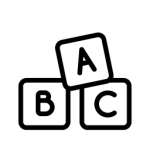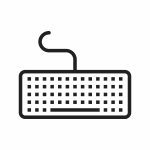Women make up 47 percent of today’s tech workforce. If you compare that with the numbers from 2016, when women made up just 25 percent of all technical roles, you would likely assume that women have finally broken through the silicon ceiling and are on their way to total equity in the workforce. But, it’s not that simple.
Up until 1985, women made up 50 percent of all computer programmers. But then, something changed. What led to women’s steep decline in tech representation in 1985? And, 35 years later, how can we ensure better gender equity in the field so the world can benefit from innovations developed from diverse perspectives?
In this article, we’ll introduce you to some of history’s most influential women in computer science, then offer technical coding and community-based resources to foster lifelong learning opportunities for girls and women at every age and stage of their lives and careers.
To skip ahead to the section you’re most interested, click one of the following links:
- The History of Women in Tech
- Coding Resources for Girls and Women at Every Age and Stage
- Resources for Women Already in Tech
- Ways Companies Can Make Equitable Changes
The History of Women in Tech
Before we dive into women’s historical contributions to the world of computer science, here’s a quick pop quiz: Can you name three present-day women in tech? What about three men?
If you had trouble answering the first question, you’re not alone. After all, as we noted above, there are currently far fewer women in computer science and technology than men, and this single, simple challenge illustrates the tech gender gap for both insiders and individuals taking stock of the industry as a whole.
In order to understand just how we landed at the current gender disparity, we must look into the history of programming before modern personal computers became the go-to hardware for computer techs. From the 1800s and well into the mid-twentieth century, women were pioneering forces of computer science.
Take Ada Lovelace, often credited as the “first computer programmer,” who wrote theoretical programming language notations using numerical codes and purported the idea of looping, processes that are still used in computer programs today.
Or Edith Clarke, the “human computer,” and first woman to graduate from the Massachusetts Institute of Technology (MIT), who invented a calculator that enabled engineers to do calculations ten times faster than existing methods.
And what about engineers Christine Darden, Mary Jackson, Katherine Johnson, and Dorothy Vaughan, whose complex calculations made American space travel possible? Not only were they overlooked because of their gender, they also faced discrimination as African Americans, who, during their time at NASA, were forced to use separate facilities because of segregation laws. These trailblazing women inspired the book and subsequent film Hidden Figures and were awarded Congressional Gold Medals in 2019.
Despite mounting obstacles of race and gender, all of these women remained fierce engineers and mathematicians who helped lay the foundations of modern computer science.
But then, a shift occurred.
The 1970s and the following decades experienced major growth for women in the fields of medicine, law, and the physical sciences. But while these previously male-dominated industries were filling more roles with female candidates, the percentage of women in computer science took a sharp decline in 1985.
So, what exactly changed that year?
Toys Are for Boys: Advertising and the Decline of Women in Tech
Although it’s difficult to pinpoint one specific catalyst that led to the decline of women pursuing computer science from the mid 80s onward, several researchers suggest a perfect storm of several social and economic factors that led to this unprecedented inaccessibility and invisibility for women in tech.
In 1985, two inventions changed the world and technology as we would come to know it: personal computers and the Internet. With the introduction of these new products came new marketing opportunities that covertly — and sometimes, overtly — suggested that computer science was a male-dominated field, ultimately pushing women out. As Hollywood released blockbusters like Weird Science and Star Trek, television commercials advertised computers and computer-based games geared almost exclusively toward boys and men, as seen in these Apple advertisements from the 70s and 80s.
Without any mainstream representation to lean on, women were literally seeing less of themselves in technology positions. As a result, the effects of media and advertising quickly made computers the cool new toys for boys, effectively closing the door on women and changing the landscape for decades to come.
The Impact on Women in Tech
In the 1990s, Jane Margolis, a researcher at Carnegie Mellon University, conducted a study during which she interviewed hundreds of families about their use of personal computers. Her findings concluded that families were much more likely to purchase computers for their sons than their daughters, even if their daughters showed a strong interest in the technology.
With families more likely to promote computer literacy in boys than girls, girls and young women who did major in computer science in college were at a severe disadvantage because they had little to no prior experience working on physical computers.
Patricia Ordóñez is just one of many women who dropped out of a computer science major in the 1980s. A high school mathematics wiz and current doctor of computer science at the University of Puerto Rico, Ordóñez had switched her college major from computer science to foreign language because of several negative experiences in introductory-level computer courses.
“I remember this one time I asked a question and the professor stopped and looked at me and said, ‘You should know that by now,’”she recalls. “And I thought ‘I am never going to excel.’”
Ordóñez’s unrealistic perception that all students were coming to universities at the same experience level created an even greater divide for her and for women entering tech as a whole, who had similarly internalized the belief that they were not welcome in the field based on their experiences trying to enter it.
Closing the Gaps
According to studies conducted by Harvard Business Review, the key to getting more women into tech comes down to visibility. If girls and women are able to see positive representations of themselves in computer science roles and in the media, they’re much more likely to pursue a career and succeed in the field.
So how do we increase the visibility of women in tech?
For one thing, tech accessibility must begin early.
In recent years, public schools across the U.S. have enacted curriculum reforms that recenters STEM (science, technology, engineering, and math) subjects as a focal point of instruction. With one million more openings than experts to fill these technical roles, the United States government recognizes the demand for initiatives that bring diverse teachers and content to classrooms across the country, according to ACT.org.
While legislative initiatives can help fill in the gaps of technical literacy, there remains a plethora of resources where girls and women can gain an in-depth supplemental education at their own pace, regardless of their current age or stage in their careers.
From toys and programming games to intensive courses and community networks, we’ve put together an extensive list of coding and data science resources that can help girls and women of all ages dive into tech.
The Future Starts Here: Coding Resources for Girls and Women at Every Age and Stage
Like any individual group, women are a vital part of our society and world whose perspectives are crucial to an inclusive tech landscape and workforce. Whether you’re the parent of an aspiring young female coder, on your way to obtaining a degree or certificate in web development, or a seasoned computer science professional, it’s never too late to learn about, grow into, or enter the world of tech and programming.

 Live Chat
Live Chat




